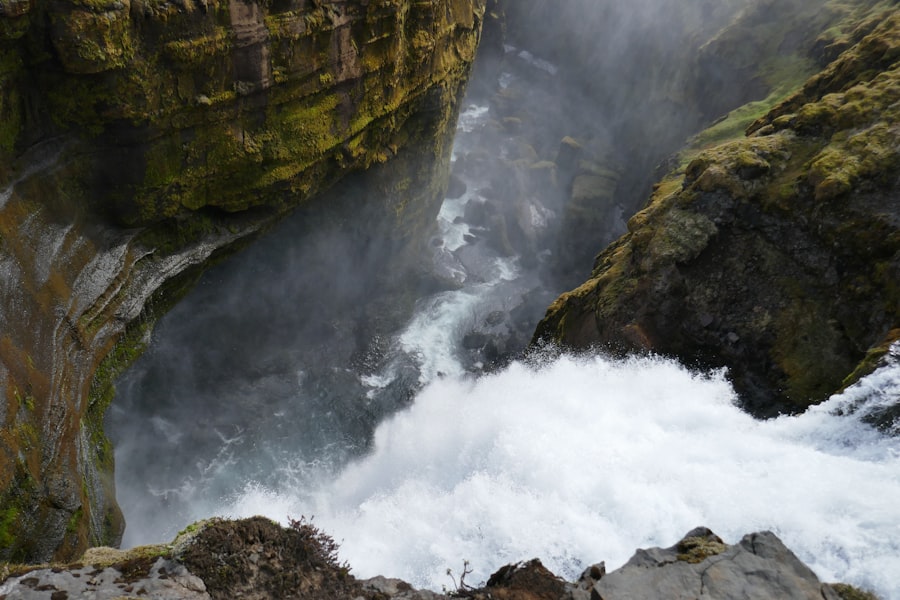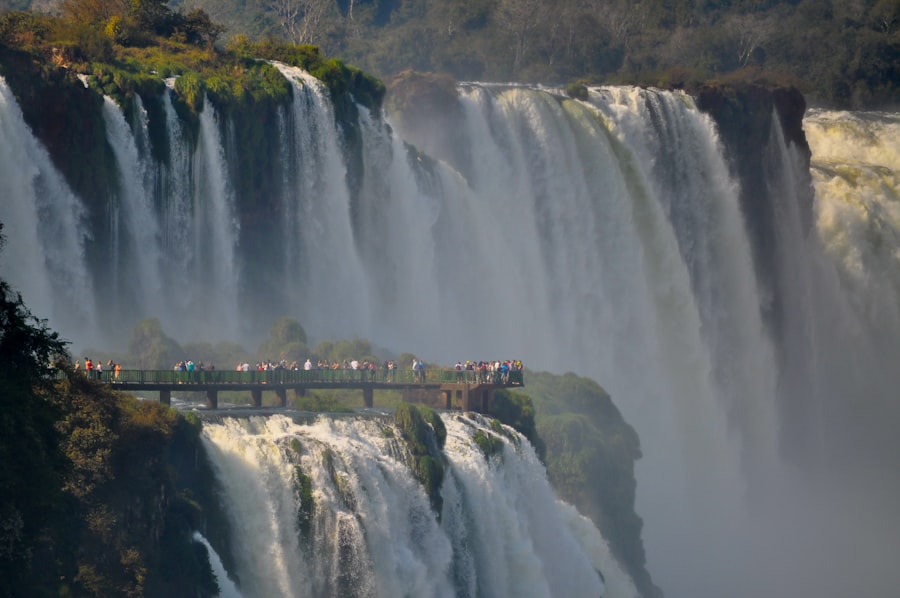
Guyana, a small yet vibrant country located on the northeastern coast of South America, is often overshadowed by its more prominent neighbors. Bordered by Venezuela to the west, Brazil to the south, and Suriname to the east, it boasts a unique blend of cultures, languages, and landscapes. The capital city, Georgetown, is known for its colonial architecture and bustling markets, while the country’s vast interior is characterized by dense rainforests, savannas, and an array of rivers.
Guyana is the only English-speaking nation in South America, a remnant of its colonial past under British rule, which has significantly influenced its cultural and social fabric. The country is often referred to as “The Land of Many Waters,” a nod to its extensive river systems and waterfalls. Guyana’s diverse geography includes the Amazon rainforest, the Guiana Shield, and the Rupununi savannahs, making it a treasure trove for nature enthusiasts and adventurers alike.
With a population of approximately 790,000 people, Guyana is home to a rich tapestry of ethnic groups, including Indo-Guyanese, Afro-Guyanese, Amerindians, and others. This diversity is reflected in its festivals, cuisine, and everyday life, creating a unique cultural mosaic that captivates visitors.
Key Takeaways
- Guyana is a diverse and vibrant country located on the northern coast of South America, known for its rich history, cultural diversity, and stunning natural beauty.
- The country’s history is marked by a mix of indigenous, European, African, and Asian influences, resulting in a unique blend of traditions, languages, and customs.
- Must-visit places in Guyana include the capital city of Georgetown, the Kaieteur Falls, the Rupununi savannah, and the historic town of Bartica.
- Guyana is home to a variety of natural wonders and landmarks, including the Kaieteur Falls, the Essequibo River, the Iwokrama Rainforest, and the Kanuku Mountains.
- Wildlife and ecotourism are major attractions in Guyana, with opportunities to spot jaguars, giant river otters, harpy eagles, and a diverse range of bird species in the country’s pristine rainforests and wetlands.
Historical and Cultural Facts about Guyana
Guyana’s history is marked by a series of colonial encounters that shaped its identity. Originally inhabited by various Indigenous peoples such as the Arawaks and Caribs, the region was first encountered by European explorers in the late 15th century. The Dutch were among the first to establish settlements in the early 17th century, followed by the British in the 18th century.
The British officially took control in 1814, and Guyana remained a British colony until it gained independence in 1966. This colonial legacy has left an indelible mark on the country’s legal system, language, and educational institutions. Culturally, Guyana is a melting pot where African, Indian, Amerindian, and European influences converge.
This blend is particularly evident in its music and dance forms, such as calypso and chutney. Festivals like Mashramani celebrate Guyanese culture with parades, music, and vibrant costumes. The country also observes various religious and cultural holidays that reflect its diverse population.
For instance, Diwali is celebrated by the Indo-Guyanese community with lights and sweets, while Emancipation Day commemorates the abolition of slavery and is marked by festivities that honor African heritage.
Must-Visit Places in Guyana

When exploring Guyana, several destinations stand out for their historical significance and natural beauty. Georgetown, the capital city, is a must-visit for anyone interested in colonial architecture. The St. George’s Cathedral, one of the tallest wooden churches in the world, showcases stunning Gothic design. The city is also home to the National Museum of Guyana, which offers insights into the country’s history and culture through its extensive collection of artifacts. Another notable destination is the town of Linden, located along the Essequibo River. Known for its rich bauxite mining history, Linden offers visitors a glimpse into Guyana’s industrial past while providing access to beautiful natural landscapes. The nearby Kaieteur Falls, one of the world’s most powerful waterfalls, is an essential stop for nature lovers. Standing at 741 feet tall, it is five times higher than Niagara Falls and offers breathtaking views that are sure to leave an impression.
Natural Wonders and Landmarks in Guyana
| Landmark | Location | Description |
|---|---|---|
| Kaieteur Falls | Potaro-Siparuni | One of the most powerful waterfalls in the world, located in the Amazon rainforest. |
| Rupununi Savannah | Upper Takutu-Upper Essequibo | A vast tropical savannah with diverse wildlife and indigenous communities. |
| Mount Roraima | Pakaraima Mountains | A stunning flat-topped mountain with unique ecosystems and breathtaking views. |
| Shell Beach | Pomeroon-Supenaam | A nesting ground for endangered sea turtles and a beautiful stretch of coastline. |
Guyana’s natural wonders are among its most compelling attractions. The country is home to vast expanses of untouched rainforest that are part of the Amazon Basin. These forests are teeming with biodiversity and provide habitat for countless species of flora and fauna.
The Iwokrama Rainforest Reserve is a prime example of conservation efforts in action; it spans over 1 million acres and serves as a research site for scientists studying tropical ecosystems. In addition to rainforests, Guyana features stunning geological formations such as the Pakaraima Mountains. These ancient mountains are not only visually striking but also hold significant cultural importance for Indigenous communities.
The region is dotted with unique rock formations and plateaus that offer opportunities for hiking and exploration. The breathtaking vistas from these heights provide a stark contrast to the lush lowlands below.
Wildlife and Ecotourism in Guyana
Guyana is often hailed as one of the last frontiers for ecotourism due to its rich biodiversity and commitment to conservation. The country is home to an impressive array of wildlife, including jaguars, giant river otters, capybaras, and over 800 species of birds.
Ecotourism initiatives have gained traction in recent years as travelers seek sustainable ways to experience nature.
For instance, the Rupununi region offers opportunities for wildlife spotting while supporting local Indigenous communities through responsible tourism practices.
Visitors can engage in activities such as guided hikes, canoeing expeditions, and cultural exchanges that promote awareness of both nature and local traditions.
Tips for Traveling to Guyana

Traveling to Guyana requires some preparation to ensure a smooth experience. First and foremost, obtaining a visa may be necessary depending on your nationality; it’s advisable to check with local embassies or consulates before planning your trip. Additionally, travelers should be aware that while English is widely spoken, knowledge of local dialects can enhance interactions with residents.
Health precautions are also essential when visiting Guyana. Vaccinations for diseases such as yellow fever are recommended due to the tropical climate and potential exposure to mosquitoes. Travelers should also consider taking anti-malarial medication if they plan to visit rural areas or rainforests where malaria is prevalent.
When it comes to transportation within Guyana, options vary widely from domestic flights to river taxis. The road infrastructure can be limited outside urban areas; therefore, planning ahead is crucial for reaching remote destinations. Engaging local guides can provide valuable insights into navigating these areas while ensuring safety.
In terms of cultural etiquette, it’s important to respect local customs and traditions. Engaging with communities in a respectful manner can lead to enriching experiences that deepen your understanding of Guyanese culture. Whether sampling local cuisine or participating in traditional festivals, being open-minded will enhance your journey through this captivating country.
Guyana offers an unparalleled blend of history, culture, natural beauty, and wildlife that beckons travelers seeking adventure off the beaten path. With its rich tapestry of experiences waiting to be discovered, it stands as a hidden gem in South America that promises unforgettable memories for those who venture into its heart.
If you’re interested in exploring more about various countries and their unique attractions, you might find the article on “Germany Country Study” quite enlightening. It provides an in-depth look at Germany’s rich history, culture, and key places of interest, similar to how the Guyana article offers insights into its own distinctive landmarks and cultural heritage. To learn more about Germany and its fascinating aspects, you can read the full article here: Germany Country Study. This could be a great way to compare the diverse attractions and historical contexts of different nations.
FAQs
What are some interesting facts about Guyana?
– Guyana is the only English-speaking country in South America.
– It is the third-smallest country on the continent.
– The country is known for its diverse wildlife and lush rainforests.
What are some popular places to visit in Guyana?
– Kaieteur Falls, one of the world’s largest single-drop waterfalls.
– Iwokrama Forest, a vast wilderness area with diverse flora and fauna.
– Shell Beach, a nesting ground for endangered sea turtles.
What are some must-see sights in Guyana?
– The historic capital city of Georgetown, known for its colonial architecture.
– The Rupununi savannah, a picturesque grassland region in southern Guyana.
– The Essequibo River, the longest river in Guyana and a popular destination for river tours.



